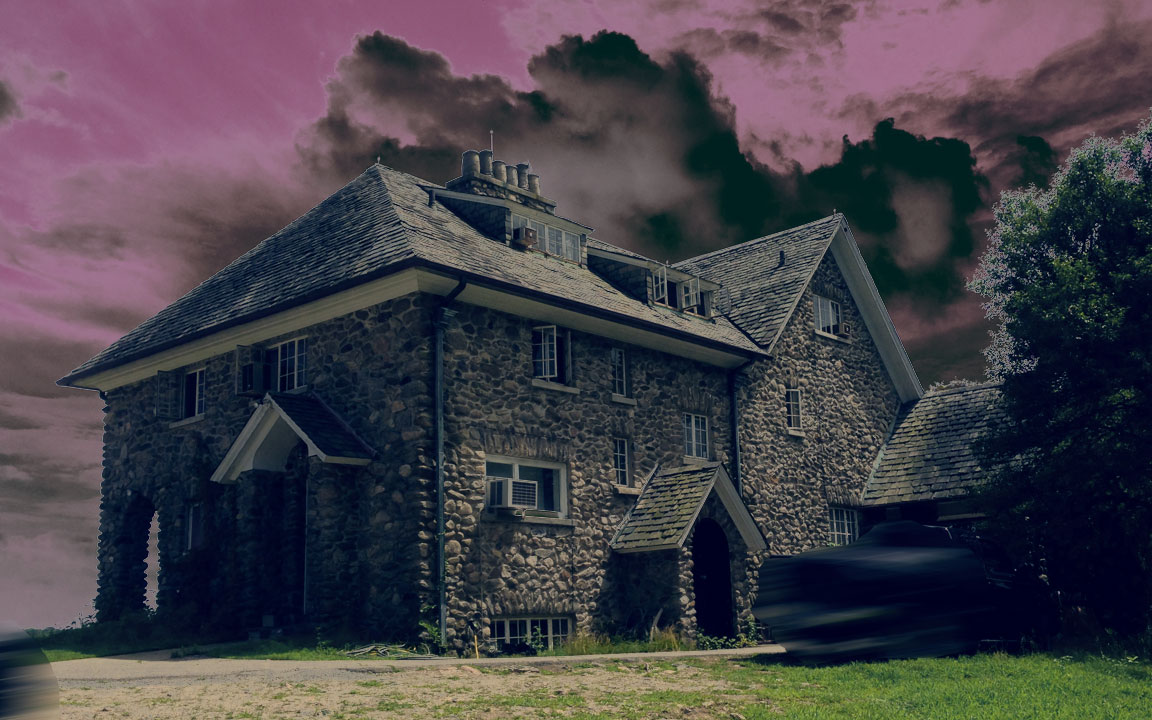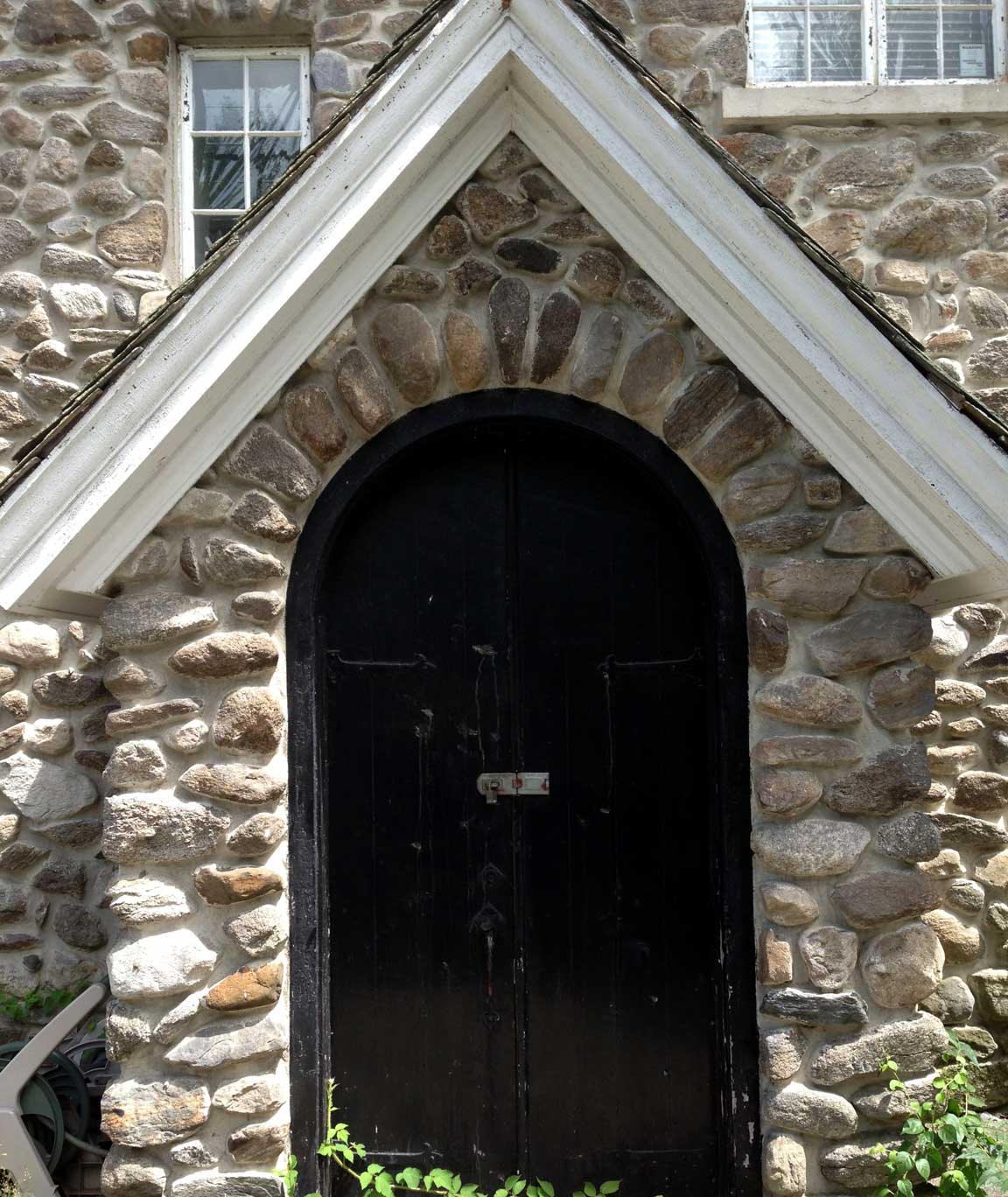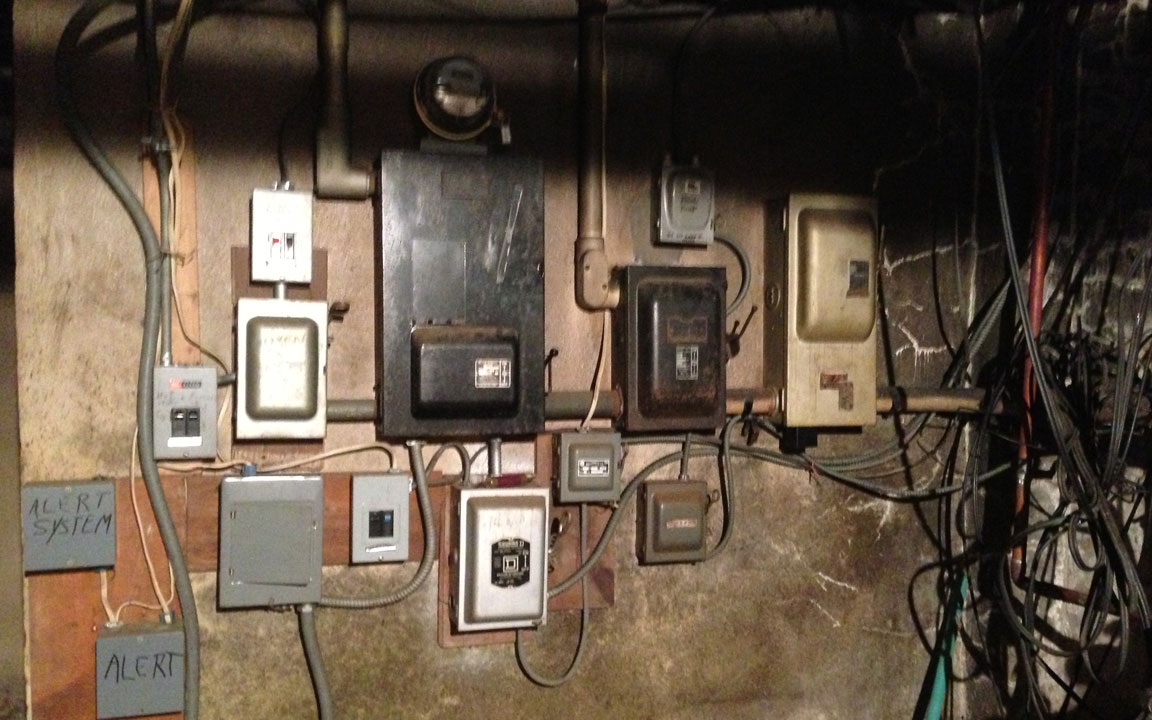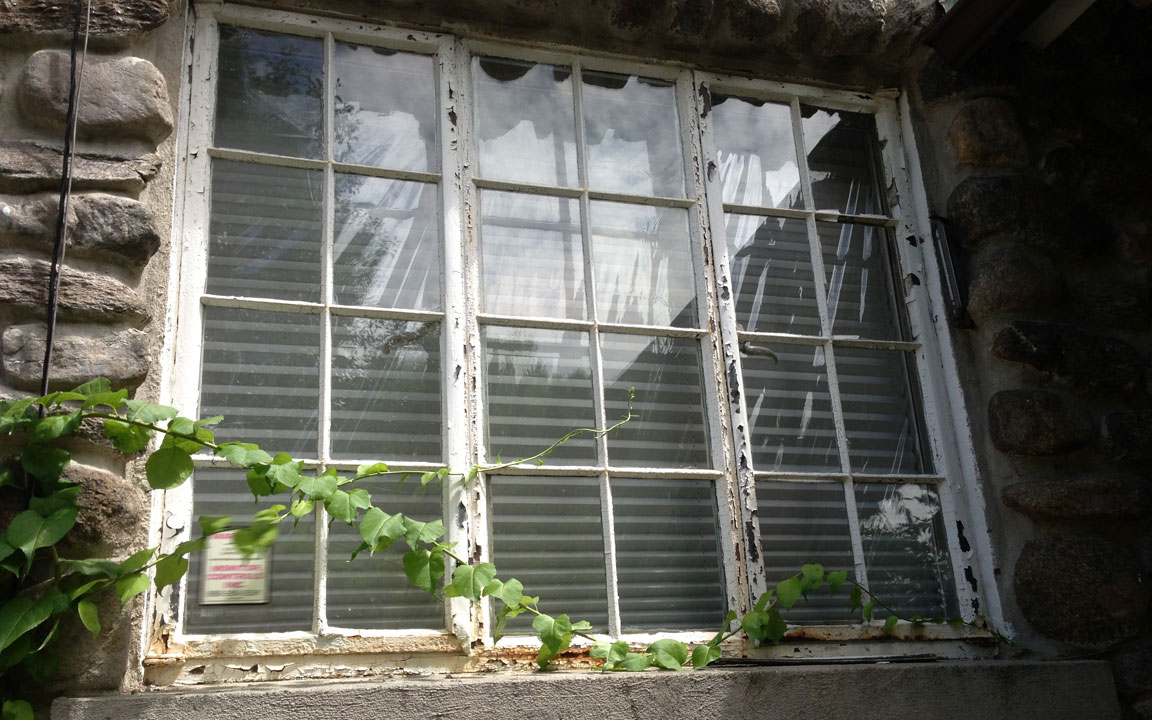The Scariest Purchase We Almost Made

On a nice summer day a few years ago, I was working on our yard and needed a truckload of dirt to fill a few spots in the lawn. After inquiring at a few places, one guy suggested trying a contractor working on a new development surrounding a historic mansion down the street. Developers sometimes sell dirt as they clear lots, so I went down to see if we could work out a deal. I didn’t know at the time, but I was about to face one of the scariest encounters on our journey to FI.
I knew the mansion well and drove down to find the contractor. After asking around the crew, I found the developer and we made a deal for a load of dirt. Then, curiosity took over and I had to ask about the fate of the old mansion. The developer took a pause to look me over and asked, “you want to buy it?” Well… maybe just a look. In a sudden rush of excitement, I ran and got Mrs. CK from the car to take a tour.
Even covered in vines and neglected for years, the large stone house stood out as a stately manor. Two stone homes built in the same style a quarter mile away were once the carriage house and servants’ quarters on what used to be a 200-acre estate. The mansion itself was three stories tall, with 6 bedrooms, 6 bathrooms, 5 fireplaces, a root cellar, a wine cellar, servant stairs, and the remnants of a large stream-fed pool in the yard. The windows were all original to the 100 year old building, as was the slate roof. It was a castle, and we were smitten. It wasn’t listed on the market, but the contractor was willing to sell to us at an incredibly low price if we agreed to restore the property and improve on the aesthetics of the development.

This possible “deal” gave us a serious case of mansion fever. For the price of a 1000 square-foot ranch, we could have a castle. We enjoy renovating and this could be our chance to restore a historic home. And not just any old home – one that had belonged to an heiress to one of America’s great inventors.
When we get into something, we kind of have a tendency to go full bore. Suddenly we had to learn everything about turn of the century architecture. We toured local historic sites, and even made a trip to Newport, RI to tour historic mansions built as summer homes by America’s wealthiest industrialists. We had been to Newport many times, but touring the mansions never appealed to us before. It seems silly, but for a brief yet feverish part of that summer, our conversations revolved around gothic revival, art deco, and Victorian architecture. Seriously, who the hell were these people?
We were in the middle of our own ongoing home renovation though. I had just met the developer to get some friggin’ dirt after all. The new venture sped up our process – it was now going to be a flip rather than a home for ourselves. We started painting and updating our existing home to suit potential buyers.
After a few weeks of research, we were feeling pretty confident that we understood how to retain the mansion’s architectural styling, and started estimating restorations costs. The home had a solid slate roof, and the type of slate that was used can last up to 200 years. The slate was still good, but the valleys in the roof were copper and had corroded to the point where water was leaking into some of the top story rooms. That was just the start of the issues that needed addressing just to halt the ongoing deterioration.
Many of the original steel windows had been cut to accommodate air conditioners, and the rest were rusted and in need of re-glazing. At first, I thought I could just weld some new window sections, then restore and re-glaze the windows myself. But there were over 70 windows on this monster. The electrical wiring was a labyrinth of panels and sub-panels that had been hacked together over the last century. It started to sink in that this was not a one person job.

I started calling around to get ballpark quotes from contractors. Not many people do restorations, and the costs were astronomical for the specialized work. Just repairing the valleys in the roof would be a $30,000 job, window re-glazing $40,000, new heating system, another $30,000. The cost for just getting the place weather-proof was starting to rival the cost of acquiring the home. By the time all was said and done, I estimated we would be in for over $500,000, and that was just for planned expenses. Yes, we would have a one of a kind castle, but there isn’t really a market for them in our neighborhood.
All of these revelations came at the same time that the developer stated a sale price slightly higher than what we thought. The deal fell through. We were left dazed and relieved. What the hell had just happened to us? For a few weeks, we were willing to imperil our financial future just for a house.

We are often overwhelmed by marketing or “good deals” that blindside us into poor decisions. It scares me to think – had we been in a higher pressure sales situation, would we have condemned ourselves?
Well lucky for us, we had time to think, and in the end, cooler heads prevailed. The developer was not putting a hard sell on us, which made it even more tempting. It was a great deal on a remarkable home that I hope will get the love and care it needs. But it was simply impractical for two people and not in keeping with our FI lifestyle. We would have sunk all of our spare dollars into restorations rather than investments, and would not be financially independent today.
Caught up in the moment, it’s easy to picture yourself in a luxury home, time share, yacht, or sports car. For a short period of time, we saw ourselves living like royalty in our palace. But when we got practical and crunched the numbers, reality hit us – we would be the paupers spending all our time and fortune caring for the manor, not the king and queen.